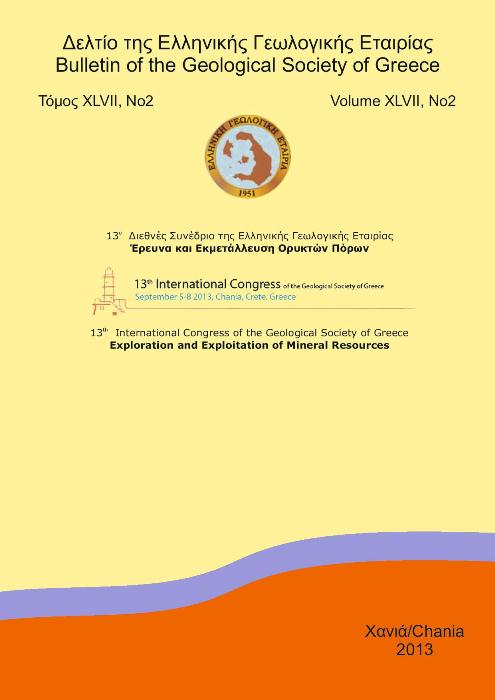SEISMIC DAMAGE SCENARIOS IN KALAMATA (S. GREECE)

Περίληψη
Ta σενάρια βλαβών είναι χρήσιμα και απαραίτητα εργαλεία στους φορείς λήψης
αποφάσεων, προκειμένου να προετοιμάσουν στρατηγικές προστασίας και συνολικό σχέδιο έκτακτης ανάγκης σε μετασεισμική κατάσταση. Για το σκοπό αυτό, αναπτύχθηκαν τέσσερα μοντέλα κινδύνου για την πόλη της Καλαμάτας, σύμφωνα με το μοντέλο της στοχαστικής προσομοίωσης της κίνησης του εδάφους, χρησιμοποιώντας συναρτήσεις εδαφικών ενισχύσεων, προερχόμενες από μετρήσεις μικροθορύβων HVSR. Η δομική τρωτότητα των κτιρίων της πόλης αξιολογήθηκε με εφαρμογή ενός μακροσεισμικού εμπειρικού μοντέλου που αναπτύχθηκε για τα ευρωπαϊκά αστικά περιβάλλοντα (EMS-98). Μελετάται επίσης, η επιρροή της τρωτότητας από το σεισμικό σενάριο μέσω συνθετικών φασμάτων απόκρισης σε 108 σημεία της πόλης. Οι αναμενόμενοι βαθμοί βλάβης ανά οικοδομικό τετράγωνο, υπολογίζονται μετά από συνδυασμό της τρωτότητας με τη σεισμική επικινδυνότητα, που εκτιμήθηκε για τις 4 διαφορετικές σεισμικές πηγές. Τονίζεται η σημασία της ακολουθούμενης μεθοδολογίας για την εφαρμογή μικροζωνικών μελετών, δεδομένου ότι η αναμενόμενη επίδραση της ενίσχυσης της εδαφικής κίνησης λόγω των τοπικών εδαφικών συνθηκών εκτιμάται με καλή προσέγγιση. Επιπλέον, νέες καμπύλες τρωτότητας και ευθραυστότητας προτείνονται για τις κύριες δομικές κατηγορίες, για κάθε σεισμικό σενάριο.
Λεπτομέρειες άρθρου
- Πώς να δημιουργήσετε Αναφορές
-
Kazantzidou-Firtinidou, D., Kassaras, I., Ganas, A., Tsimi, C., Sakellariou, N., Mourloukos, S., Stoumpos, P., Michalaki, K., & Giannaraki, G. (2016). SEISMIC DAMAGE SCENARIOS IN KALAMATA (S. GREECE). Δελτίο της Ελληνικής Γεωλογικής Εταιρείας, 50(3), 1495–1505. https://doi.org/10.12681/bgsg.11862
- Ενότητα
- Σεισμολογία

Αυτή η εργασία είναι αδειοδοτημένη υπό το CC Αναφορά Δημιουργού – Μη Εμπορική Χρήση 4.0.
Οι συγγραφείς θα πρέπει να είναι σύμφωνοι με τα παρακάτω: Οι συγγραφείς των άρθρων που δημοσιεύονται στο περιοδικό διατηρούν τα δικαιώματα πνευματικής ιδιοκτησίας επί των άρθρων τους, δίνοντας στο περιοδικό το δικαίωμα της πρώτης δημοσίευσης. Άρθρα που δημοσιεύονται στο περιοδικό διατίθενται με άδεια Creative Commons 4.0 Non Commercial και σύμφωνα με την οποία μπορούν να χρησιμοποιούνται ελεύθερα, με αναφορά στο/στη συγγραφέα και στην πρώτη δημοσίευση για μη κερδοσκοπικούς σκοπούς. Οι συγγραφείς μπορούν να: Μοιραστούν — αντιγράψουν και αναδιανέμουν το υλικό με κάθε μέσο και τρόπο, Προσαρμόσουν — αναμείξουν, τροποποιήσουν και δημιουργήσουν πάνω στο υλικό.









